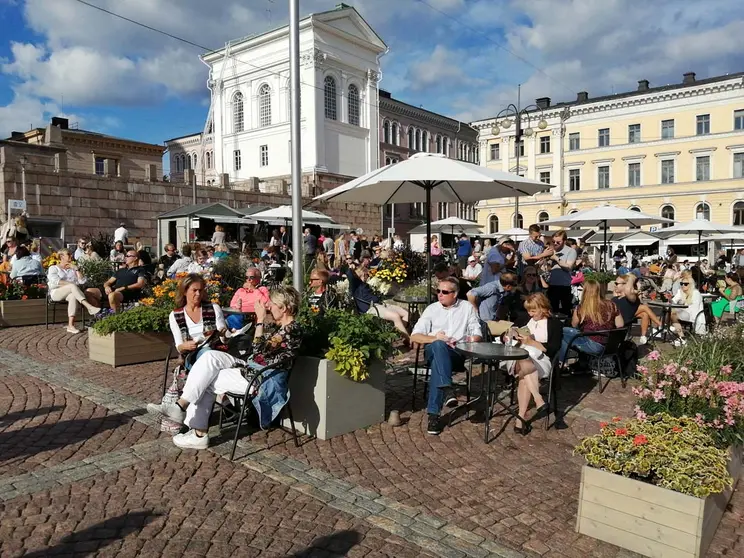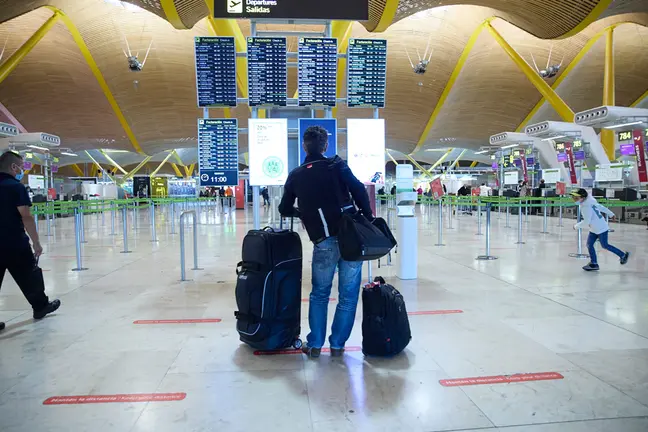The number of new coronavirus infections in Finland remains low compared to other European countries that have been hit hardest by the Covid-19 pandemic. However, the spread of the virus is accelerating, specially in the hospital district of Helsinki-Uusimaa and in the touristic regions of Satakunta (Pori) and Southwest Finland (Turku).
The Government is currently evaluating the convenience of adopting new measures to curb the epidemic, such as the use of masks in certain public places. But the final decision, which was expected this week, has been delayed for another week.
According to the latest data released by the Ministry of Social Affairs and Health, during the last monitoring period (from 27 July to 2 August) a total of 74 new Covid-19 infections were reported to the communicable diseases register.
In the week before, the number of new reported cases was 51, showing an increase in the number of cases reported in the two previous weeks: 42 cases in the week beginning 13 July and 38 cases in the week beginning 6 July.
In other words, the number of new infections is relatively low, but has nearly doubled from a month ago. For the government, which prefers to see the bottle half full, there has been a "slight increase in reported cases in July."
There is also a change in the profile of those infected, now they are mostly young adults between 18 and 49 years old.
On Thursday 6 August the National Institute for Health and Welfare (THL) reported 20 new infections and the previous day 29. Since the beginning of the epidemic, Finland has recorded 7,532 cases and 331 deaths associated with the virus.
More than 1 infection per patient
Currently, the estimated basic reproduction number (RO) is 1.10–1.40, with a 90% probability interval. This value indicates how much the virus is spreading. A reproduction rate higher than 1 means that, on average, each patient carrying the disease infects more than one person.
The reproduction number was already on the rise one month ago. And two weeks ago, the government admitted that the downward trend of new Covid-19 infections had stalled.
Now, when the summer vacation period comes to an end and schools are about to reopen for thousands of children, the spread of the virus is accelerating and Sanna Marin's government is facing what may be the beginning of a second wave.
According to health authorities, the incidence of new cases during the week beginning 27 July was 1.3 per 100,000 inhabitants nationwide. But the incidence is much higher in the hospital districts of Satakunta, Helsinki-Uusimaa and Southwest Finland.
The latest prevalence data confirm this: according to THL, the prevalence of cases in relation to Finland’s total population (5,543,233) is 136 cases per 100,000 people nationwide. But these numbers almost double or triple in two of the above mentioned regions: 325.5 in Helsinki-Uusimaa, 252.1 in Satakunta.
Face masks recommendation
Kirsi Varhila, permanent secretary of the Ministry of Social Affairs and Health, admitted at a press conference on Thursday that the situation is complex at this stage and, if the number of cases continues to rise in the next two weeks, Finland may face a second wave.
According to Varhila, based on the current law Finnish authorities cannot order people to use face masks, though she expects there will be "a recommendation" to do so. Authorities have not yet agreed on when it should take effect and if it would be national or only for the worst-hit regions.
The government also said in its latest assessment that "some of the new cases are related to identified infection chains and clusters of cases that are being monitored, but the source of all infections is not known." The infection chains of all new cases are tracked in order to prevent further spread as effectively as possible.
On Thursday Finland had 6 patients hospitalized and none of them was in intensive care. The pressure over the hospital system has remained low since the beginning of July.
More than 90% of those who have been infected since the beginning of the epidemic have recovered.












